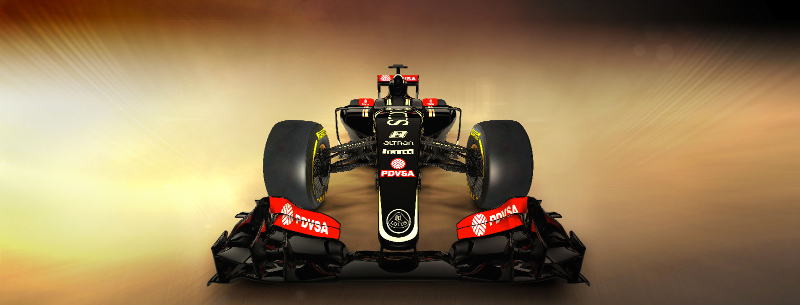
Lotus F1 Team’s 2015 challenger, the E23 Hybrid, arrived in Jerez today after firing-up for the first time at the team’s Enstone base on Saturday January 31. The car is now undergoing its build programme overnight and through Monday, with the first significant running expected for Tuesday February 3.
Nick Chester, Lotus F1 Team Technical Director:
“We have been pursuing a very tight and aggressive build programme with the E23 Hybrid which is one of the most technically advanced cars to have come out of Enstone. We will take to the track with this car as soon as we are ready from an engineering perspective. We’ve fired-up the car at Enstone and we’re now putting everything together ahead of the first laps on track. Everyone at Enstone is very positive with what we’ve seen of the E23 Hybrid so far and we’re looking forward to it turning its wheels in anger for the first time later this week.”
Go Figure
The E23 in Numbers
0 – The time taken in seconds for the gearbox of the E23 to change gear (drive is never lost during the gearshift).
0.04 – How much faster in seconds the E23 goes each lap due to the reducing weight as the car burns fuel (not accounting for tyre degradation).
1.6 – The time in seconds for the E23 to decelerate from 100 km/h to standstill.
4 – The number of Power Units allocated to each driver in 2015.
4.9 – How many seconds it takes for the E23 to reach 200 km/h from standstill.
6 – The number of consecutive races each gearbox must survive before it can be changed without suffering a five-place grid penalty.
8 forward and 1 reverse – The number of gears in the E23’s gearbox.
15 – How many hours it takes for a complete rebuild of the car at the track with 12 mechanics.
87.75 – The impact energy in kilojoules that must be withstood by the nose of the car when it is crash tested by the FIA. This is the same amount of energy as would be required to stop a 4 tonne elephant moving towards you at 24km/h.
102 – The weight in Kg subjected to the end of the front wing by the FIA, it cannot move more than 10mm.
220 – The pressure in Bar the cars hydraulic system works at, a road car tyre is about 1.8 Bar.
702 – The minimum dry weight of the car in kilograms.
1,100 – The temperature in degrees Celsius of the exhaust gases when the car is on full throttle.
1,200 – In degrees Celsius, this is the temperature a brake disc can reach during the race.
2,500 – The number of gear changes the drivers have to make during an average Grand Prix.
12,500 – The number of technical drawings produced by the time of the E23 car build (more than any other car from Enstone).
30,000 – The number of individual parts that make up each E23.
125,000 – The max rotational speed in RPM of the MGU-H.
250,000 – The amount of man hours that have gone into the design of the E23.